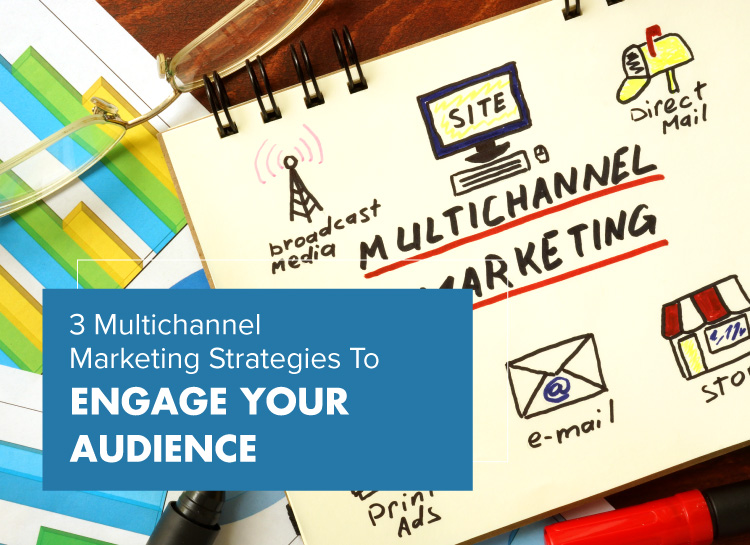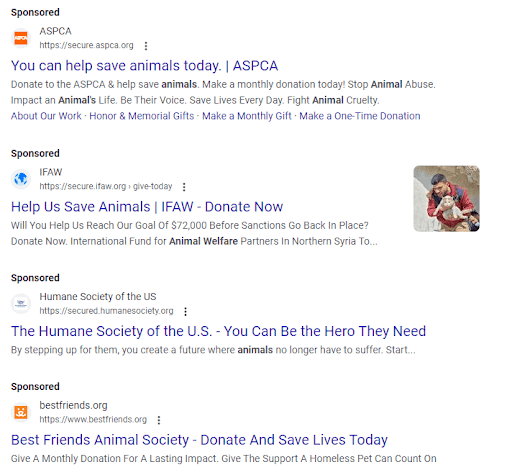
When it comes to effectively spreading the word about your mission, engaging as many supporters as possible, and building stronger donor relationships, a multichannel approach will always be more effective than limiting yourself to just one or two channels.
Multichannel marketing is the practice of blending several different communication channels to bring awareness to your organization or a specific campaign you’re hosting. This technique goes far beyond the nonprofit world, but for nonprofit organizations, multichannel marketing remains one of the most successful strategies for effective fundraising, as well as higher donor engagement, retention, and acquisition rates.
By reaching out to your target audience through multiple touchpoints, you can ensure that as many people as possible engage with your cause on their preferred platforms. If you’re eager to begin using this strategy (or improve your current approach to multichannel marketing), consider these essential steps to an effective multichannel campaign:
With these tips in hand, you will be able to increase the impact, reach, and engagement potential of your nonprofit’s multichannel marketing approach. Let’s begin by looking at the best channels to kick off your campaign.
1. Choose your channels carefully.
The first step in launching your multichannel marketing campaign is choosing the right channels. Phone calls, email, direct mail, social media, digital ads, text messages, blog posts, and word-of-mouth advertising are all important ways to get the word out.
Let’s focus on four essential channels that will provide the foundation for a well-rounded multichannel marketing campaign: direct mail, email, social media, and Google ads.
Direct mail
In such an intensely digital world, it’s easy to brush off direct mail as an outdated channel. However, it’s anything but obsolete—it’s a valuable communication tool with high response rates, ROI, and visibility. In fact, 75% of Millennials surveyed said receiving personal mail makes them feel special.
Sending letters, postcards, pamphlets, and other mailers can not only help support your marketing activities but also make a positive impression on supporters.
Additionally, direct mail can:
- Remind supporters of your mission. A piece of mail is a compelling and memorable reminder of your mission. After all, most people at least skim every piece of mail they receive, and they’re more likely to contribute if you’re on their mind.
- Help connect with older supporters. As donors age, their channel preferences evolve. Be sure to keep up with the trends and channels that emerge to best communicate with various donor segments over time.
- Update supporters on your efforts. Use your mail as your outlet for important stewardship information. Consider promoting efforts such as events and volunteer opportunities in addition to requesting donations to provide multiple ways for supporters to get involved in your work.
Meyer Partners’ guide to direct mail fundraising dives deeper into the benefits and best practices of this medium, emphasizing the intimacy of direct mail and how—with a targeted approach—it can be one of your most valuable channels. In particular, direct mail is a medium that thrives on storytelling, giving you the ideal platform to physically and emotionally connect with readers.
According to Double the Donation’s fundraising statistics, 48% of donors say that regular email communications are most likely to keep them engaged and inspired to give recurring donations.
Both inexpensive and inspirational, email marketing is a critical medium to engage with and continually keep in contact with donors. To minimize the number of donors who scroll past your emails or lose them in the clutter of their inboxes, use the following tips to stand out:
- Include a compelling subject line to grab recipients’ attention.
- Create a visually pleasing layout.
- Employ a clear call to action.
- Tell a story in your body text.
- Follow up regularly.
Track who opens and takes action on your emails, monitoring data such as conversion and abandonment rates, in order to gauge the success or failure of your campaign. This will allow you to send more effective email fundraising and marketing materials in the future.
Social media
Social media marketing is an excellent tool for reaching a wide array of potential donors. However, implementing a nonprofit digital campaign may be challenging due to the massive amount of posts on social media platforms.
Consider each social media platform as an individual entity and optimize your content strategy for the specific platforms you choose. For instance, Instagram is best used for images, TikTok for short videos, and Facebook for long-form content.
Additionally, make sure your nonprofit’s social media supplements your larger outreach strategy. This can be done with a comprehensive social media content plan. As your campaign takes off, track key performance indicators (KPIs) over time to provide content where your donors are scrolling. Then, when users begin to interact, listen and respond as much as possible.
Google Ads
How many times do you search on Google per day? Research shows that the average person uses Google at least three to four times per day to get their questions answered.
That’s why a Google Ad strategy can be an effective addition to your multichannel marketing efforts. Google Ads are the paid search ads that appear at the top of Google results pages. For example, here are the ads that appear on the SERP for the term “animal welfare organizations”:
As a nonprofit, you don’t have to spend your own marketing dollars to finance a Google Ad strategy. If you’re accepted into the Google Ad Grants program, you can access $10,000 per month in free Google advertising.
To make the most of this funding, Getting Attention recommends optimizing your Google Ads using the following strategies:
- Write enticing ad copy that encourages people to click through to your website. Include keywords in your ad copy to appeal to users’ search intentions.
- Optimize your ad landing pages. Lead visitors to well-designed web pages that allow them to learn more or get involved with your organization.
- Spotlight the unique elements of your nonprofit. Stand out from the crowd by highlighting your nonprofit’s uniqueness, whether it’s your distinctive approach to peer-to-peer fundraising or your creative volunteer program activities.
It can be helpful to work with a Google Ad Grant agency to help get your program off the ground. These professionals can ensure that your account is set up correctly and maximize your ROI on this marketing channel.
2. Craft the right message.
There are several factors that go into crafting impactful content that will personally appeal to donors and inspire them to give, volunteer, or otherwise support your cause.
The first thing to consider is timeliness. In other words, when is your campaign occurring, and how does that affect the size, complexity, and content of your campaign? For example, a small-scale summertime fundraising push is going to look quite different from a large-scale, complex year-end giving campaign. You’ll want to keep that in mind as you allocate resources and determine the right messaging to inspire supporters to get involved.
Secondly, personalizing your messaging is a big factor in connecting with supporters and creating the right message. Use the information in your nonprofit CRM, or constituent relationship management system, to personalize messages to your supporters. People tend to respond better to more individualized communication rather than a generic call to action.
Segmentation strategies also ensure you adhere to the interests of your supporters as you send messages to them. For example, you can send event opportunities to the donors who spend more time volunteering because they are most likely to respond and interact with these opportunities.
Additionally, there are numerous ways to add personal touches to your marketing outreach. As mentioned above, people respond well when they see that a nonprofit has taken the time to specifically reach out to them. Follow these essential tips:
- Address them directly. For example, in the introduction of an email or physical letter, use your supporter’s preferred name rather than a “Dear valued supporter” or similar generic introductions.
- Reference past interactions. You might thank donors for last month’s $100 donation or let them know that you appreciated their attendance at your recent 5K fundraiser event. Donors respond positively to these extra details that show that your nonprofit is paying attention.
- Thank your donors. As your donors interact with your marketing pushes, be sure to promptly thank them for their time and contributions. This gesture will go a long way in creating a personal connection with them.
Taking the extra time to cater to your donor segments can go a long way when it comes to securing their donation and deepening your relationship with them. With the right message, your content will stand out both on paper and in a social media feed.
3. Use effective imagery.
Now that you have your selection of platforms and you’ve determined messaging tactics, be sure to include some eye-catching photos and graphics in your marketing materials as well. These will draw attention to your content and encourage engagement.
Generally, just one or two images can speak louder than a clutter of visuals. Using too many can often confuse the reader or distract them from the content.
Effective imagery will help evoke emotion in the reader, creating the most significant impact possible. These types of images can include:
- Photos of outreach events
- Photos of people or animals your organization is actively helping
- Fun moments from fundraising events
- Infographics on progress made during campaigns
With these dynamic visuals and effective image best practices, recipients and users will be able to picture themselves as a part of your organization or empirically see how your cause is making progress.
Of course, each marketing medium is unique and you’ll want to be strategic and tasteful in how you share different images. For example, social media is ready-made for collages of images and videos to be plastered onto your organization’s profile. In contrast, direct mail is built around language, so it would be more appropriate to accompany a fundraising appeal with only one printed visual that is enclosed within the same envelope.
Successfully pulling off an effective multichannel marketing campaign is no easy feat, and it can take quite a bit of planning and research to target the right audience with the right message on the right platforms.
However, with these strategies, you will be in a far better position to not only grab the attention of current and prospective supporters, but engage them, inspire them, and guide them towards actionable next steps to support your mission.
